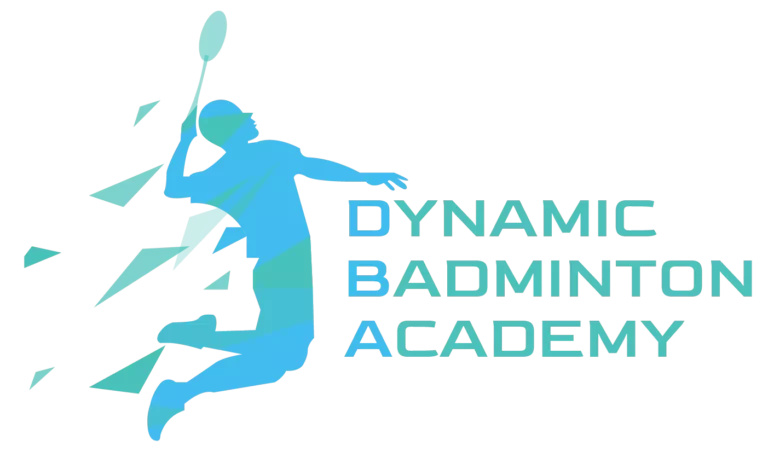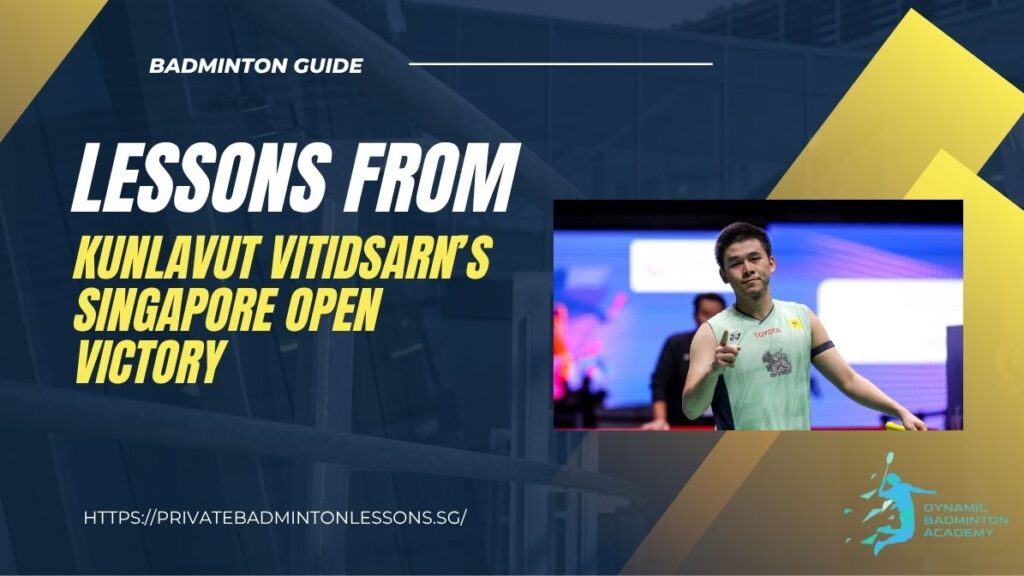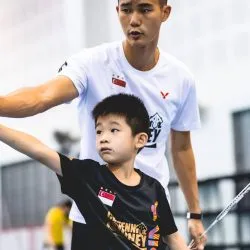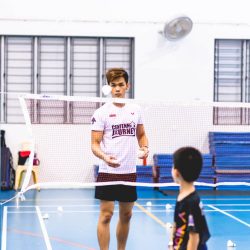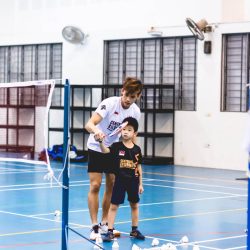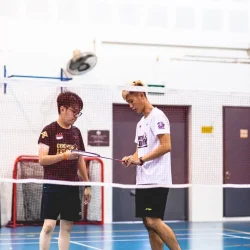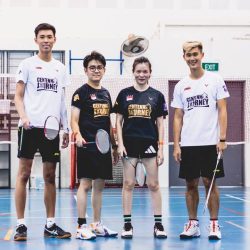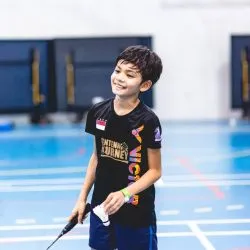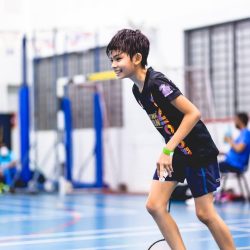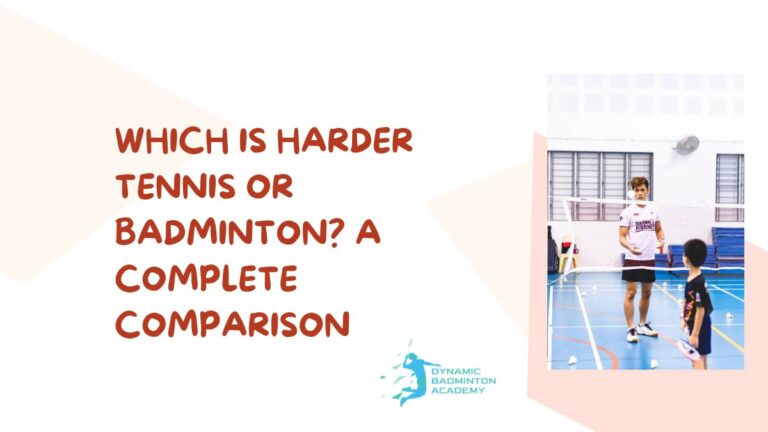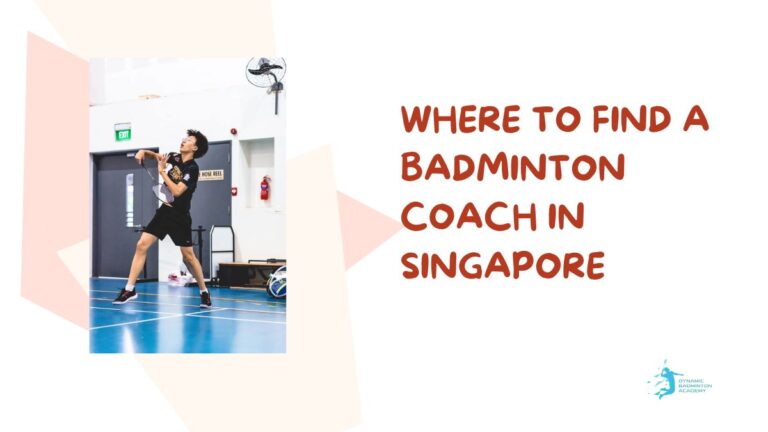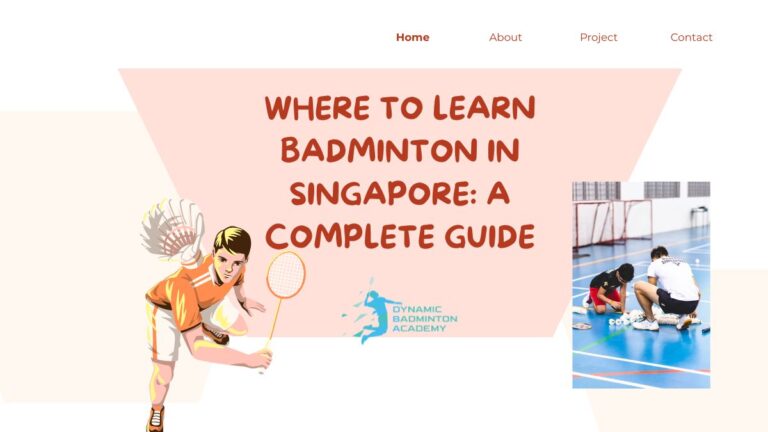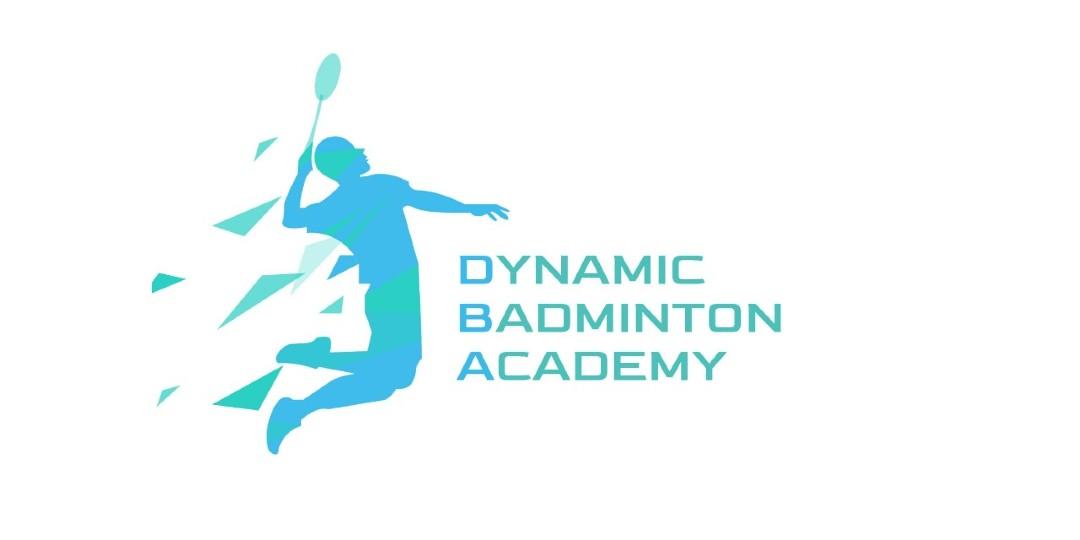Footwork Mastery: Lessons from Kunlavut Vitidsarn’s Singapore Open Victory
For those who watched Kunlavut Vitidsarn glide across the court during the Singapore Open 2025, one thing was clear—his footwork wasn’t just fast; it was poetic. Like a seasoned chess master, he anticipated every move, repositioned with grace, and never once seemed out of place. Behind every smash, drop shot, and rally-saving dive (okay, maybe not “dive”) was a foundation of elite-level footwork. And if there’s one lesson local players can walk away with, it’s this: if your feet can’t keep up, your racket won’t stand a chance.
At Dynamic Badminton Academy, we’ve always believed that strong footwork is the bedrock of a great game. Watching Kunlavut play was a timely reminder of that truth—and a powerful teaching opportunity for every player aspiring to improve.
Why Footwork Matters in Every Rally
Let’s face it: badminton isn’t just about hitting hard. It’s about reaching the shuttle early enough to make smart choices. Kunlavut’s performance showcased how great footwork doesn’t just improve your speed—it actually slows down the game for you. That’s right. With proper positioning, even the most aggressive smashes and deceptive drop shots lose their sting.
Footwork allows players to conserve energy, create better shot angles, and avoid panic-mode swings. For many beginners or even intermediate players in Singapore, it’s tempting to focus on racket skills alone. But the truth is, a powerful smash won’t help if you can’t get behind the shuttle in time to deliver it.
What Kunlavut Did Differently
While most players were still planting their feet, Kunlavut had already taken his split step. His footwork was so light and precise that it seemed like he was dancing on air. Each movement was measured—not too long to lose balance, not too short to delay the next step.

At Dynamic Badminton Academy, we often remind students that footwork is a blend of anticipation, strength, and rhythm. Kunlavut’s Singapore Open matches were a highlight reel of these three elements in action.
What stood out even more was how effortlessly he transitioned between defensive and offensive positions. Whether retrieving a tight net shot or lunging into a cross-court smash, his movement never looked strained. That’s not magic—it’s mastery.
The Split Step: The Unsung Hero
The split step is one of those deceptively simple moves that separate the weekend warriors from the serious contenders. You might’ve noticed Kunlavut taking a small hop before reacting to his opponent’s shot. That’s the split step. It resets your balance, readies your muscles, and primes your body for an explosive push-off in any direction.
It’s not flashy, and you probably won’t get any applause for it, but without it, you’re basically reacting half a beat too late. We see this often during badminton trial class sessions—students who skip the split step often find themselves a step behind the rally, quite literally.
Footwork Isn’t One-Size-Fits-All
Here’s the tricky part: copying Kunlavut’s footwork exactly might not work for every player. He has a specific body type, muscle composition, and playing style. But what Singaporean players can do is study his principles and adapt them.
Shorter steps when moving forward. A wider base when defending smashes. Proper recovery steps after lunges. Each of these principles can be tailored for different age groups, fitness levels, and match styles. Whether you’re a 12-year-old beginner or a weekend warrior in your 40s, your footwork can—and should—be trained.
Local Insights: The Singaporean Edge
In Singapore, where court time is often limited and players juggle sports with school or work, efficiency becomes even more crucial. According to a 2024 case study published by Sport Singapore, footwork efficiency directly correlated with match win rates among youth players aged 11 to 17. Players who regularly trained agility drills and split-step timing were 28% more likely to win their school league matches (source).
Another study conducted by ActiveSG in early 2025 focused on injury prevention and revealed that poor footwork habits—particularly awkward lunges and overextension—were a leading cause of knee injuries in school players. The takeaway? Mastering footwork doesn’t just help you win. It helps you play longer.
Drills That Reinforce Good Footwork
At Dynamic Badminton Academy, we implement drills that reflect real-game scenarios. Multi-shuttle drills are especially popular, forcing players to move from backcourt to net and side-to-side in rapid succession. Think of it like controlled chaos—it challenges players to maintain proper form under fatigue.
Shadow drills are another crowd favourite. No shuttle, no opponent, just pure movement. It’s one of those “looks easy, feels painful” exercises that build muscle memory and rhythm. And let’s not forget ladder footwork training—excellent for improving explosive steps and coordination.
The Mental Side of Footwork
Footwork isn’t all in the legs—it starts in the mind. Anticipation is just as vital as agility. What made Kunlavut’s footwork so effective wasn’t just his speed; it was his ability to read the game.
For young athletes or adult learners here in Singapore, this means watching more games, understanding shot patterns, and becoming students of the sport. Learn to see the shuttle’s flight early, and you’ll move smarter, not harder.
We often encourage our players during lessons to mentally map out their movement options after every shot. It might sound like overthinking, but it becomes second nature with practice. That’s when the real magic happens—when your body reacts before your mind even finishes processing.
Avoiding Common Footwork Pitfalls
It’s not all smooth sailing. Many players fall into habits that undo all their good work. Crossing your feet during lateral movements, overcommitting to one direction, or simply standing flat-footed after a shot—these are all common missteps we address early in training.
Often, the problem lies in neglecting recovery. You can play a brilliant net shot, but if you don’t return to the centre with control, your next move could turn into a scramble. Kunlavut’s game demonstrated near-perfect recovery after every shot, and that’s something we strive to instil in our students from day one.
Building a Long-Term Foundation
What Kunlavut showed at the Singapore Open wasn’t a product of overnight magic—it was years of training, drilling, correcting, and repeating. For local players aiming to reach national-level competitions or just looking to dominate in weekend games, the blueprint is there.
We’ve seen students who came in struggling to cover half the court, and within months of consistent footwork training, they were playing rallies they couldn’t have imagined. It’s a transformation that doesn’t just improve your game—it boosts confidence too.
Beyond the Court: Discipline and Control
Interestingly, footwork training spills over into other areas of life. Discipline, focus, resilience—these traits get reinforced every time you commit to mastering your steps. One of our long-time students, Marcus, a JC student from Queenstown, once shared how the discipline of footwork drills helped him manage exam stress. “If I can keep up with 5-point movement drills, a maths paper can’t break me,” he joked. That’s the kind of mental strength badminton builds, one step at a time.
Where to Begin
For anyone inspired by Kunlavut’s display, the first step is literally that—a step. Whether you’re exploring the game through a badminton trial class or deep into private training, prioritising footwork can be the game-changer.
Our coaching team customises lessons to match each player’s needs, with a strong emphasis on balance, technique, and repeatable movement. It’s not about mimicking champions move for move—it’s about finding your own rhythm, and making your footwork work for you.
Final Thoughts: Move With Intention, Play With Confidence
Footwork might not be the flashiest skill, but it’s the foundation every great game rests upon. As Kunlavut Vitidsarn proved at the Singapore Open, movement with intention can break opponents and build victories.
If you’re ready to transform how you move on court and take your game to the next level, visit Dynamic Badminton Academy today. Whether you’re looking to book your first badminton lesson or want to fine-tune your competitive edge, we’re here to get you where you need to be—one step at a time.
Click on the link to find out more about Dynamic Badminton Academy. Chat with our Coach today!
About Us
Private Badminton Lessons
Kids Badminton Lessons
Group Badminton Lessons
WhatsApp Us
